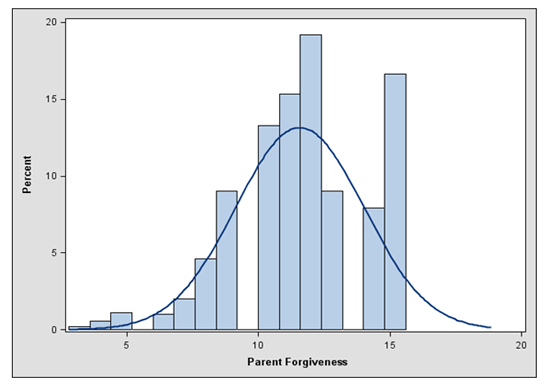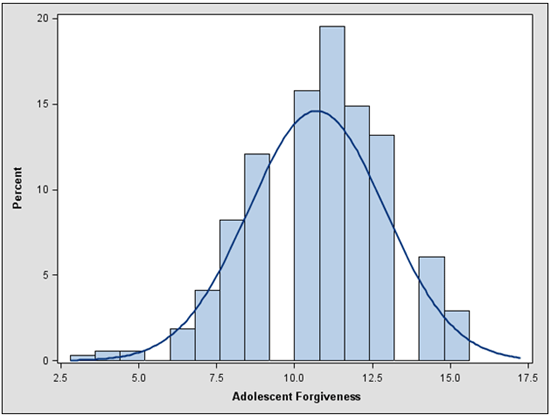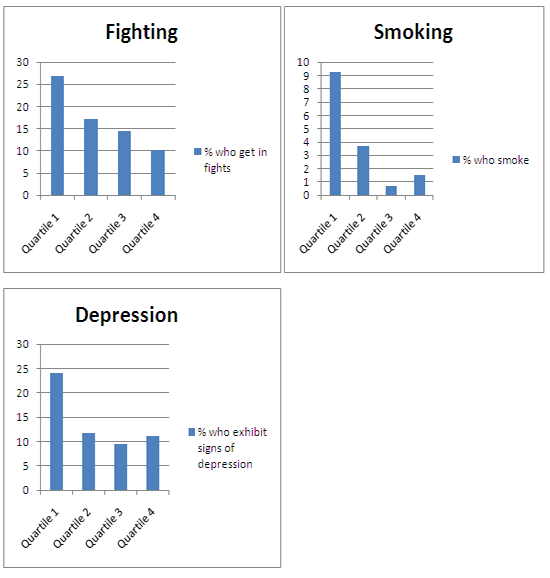Forgiveness
Definition
Forgiveness is overcoming negative feelings in response to the perception of being harmed by another person(s). The capacity to forgive applies to:
-
Forgiveness of Self
-
Forgiveness of Others
Parent Scale
Please indicate how much these statements describe your child. (Not at all like my child, A little like my child, Somewhat like my child, A lot like my child, Exactly like my child)
-
When I get angry at my child, my child can still move forward and have a good relationship with me.
-
When I get angry at my child, my child gives up the hurt and resentment towards me.
-
My child can forgive pretty easily.
Parent Scale Psychometric Properties and Fit Indices
We conducted confirmatory factor analysis (CFA) to examine whether responses to the scale appeared to measure a single construct. Along with Cronbach’s alpha, we present model fit indices below.

-
Alpha=0.64 (adequate)
-
CFI=1.000 (excellent)
-
TLI=1.003 (excellent)
-
RMSEA=0.000 (excellent)
Adolescent Scale
Please indicate how much these statements might describe how you would feel or act if a friend lied to you about something important. (Not at all like me, A little like me, Somewhat like me, A lot like me, Exactly like me)
-
I would forgive them if they showed they are sorry.
-
it would be easy for me to forgive him/her.
-
it would be hard for me to let go of my anger.

Adolescent Scale Psychometric Properties and Fit Indices
-
Alpha=0.56 (marginal)
-
CFI=1.000 (excellent)
-
TLI=1.003 (excellent)
-
RMSEA=0.000 (excellent)
Subgroup Model Fit
We tested the final adolescent and parent models with subgroups to examine whether the model fit for different subsets of respondents in the same manner as the overall sample. Using the same fit statistic requirements as the overall models, a check mark indicates that the model fit for the subgroup. Household income is defined as “low” if it is less than the median income in the sample. “High” household income indicates that the household income was equal to or greater than the sample’s median.

Concurrent Validity
Four single item measures were used to examine the concurrent validity of the adolescent scale: a measure of social behavior (fighting), a measure of health behavior (smoking), a measure of emotional health (adolescent-reported depressive symptoms), and a measure of cognitive development (grades).
Concurrent validity was examined in two ways: with bivariate and multivariate analyses. The table below presents the results of multivariate analyses, which control for: teen gender, teen age, teen race, household income, household size, parental education, parental marital status, parental home ownership, parental employment, and metropolitan area and region of residence. The beta coefficient of the relationship between the construct’s scale and outcome is presented.

The graphs below show the bivariate relationships between the adolescent scale and outcomes. Results are presented for relationships that were at least moderately significant (at the 0.10 level) in the multivariate analyses. Note that the y axis scales are different in each graph.

© Copyright 2024 ChildTrendsPrivacy Statement
Newsletter SignupLinkedInThreadsYouTube